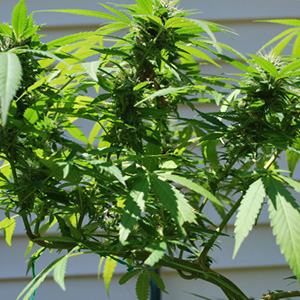In this contributor article, Amy Zukeran of Amy’s Cannabis Garden explores how cannabis can be used to treat individuals with Dravet's Syndrome. This article has been reposted and edited with permission from Amy Zukeran. The original article can be found here.

The following is an article produced by a contributing author. Growers Network does not endorse nor evaluate the claims of our contributors, nor do they influence our editorial process. We thank our contributors for their time and effort so we can continue our exclusive Growers Spotlight service.
Dravet Syndrome is a medication-resistant seizure disorder. The causes are mostly conjecture at this point; theories range from genetic-based disorders to neurotransmission problems. The National Institute of Neurological Disorders and Strokes estimates that up to 80 percent of cases are caused by a genetic defect essential for proper brain functioning. Research has shown that Dravet syndrome patients have a mutation in a specific gene (SCN1A) which occurs in the egg or sperm before fertilization. Around two years of age, the symptoms becomes apparent in the child’s development.
Dravet Syndrome is often associated with febrile seizures – seizures associated with high body temperatures but without any other distinct cause. Triggers may include elevated body temperatures, emotional stressors, flashing lights, and excitement. Myoclonic seizures, or involuntary muscle spasms, may also occur. Some sufferers may experience seizures that last as long or longer than 30 minutes. There are many additional conditions associated with Dravet syndrome, including:
- Delayed growth
- Chronic infections
- Delayed language and speech development
- Balance and stability issues
- Irregular body temperature and sweating
- Stunted bone growth
- Sensory integration dysfunction
It is thought that children with the syndrome don’t produce enough of a specific protein. Those proteins would normally decrease the brain’s excitability, reducing or preventing seizures. Think of the whole system as a see-saw. The brain is constantly trying to balance between excitatory and inhibitory impulses. In cases of epilepsy, one side of the see-saw is heavier, specifically the excitatory impulses. Frequent seizures typically indicate a permanent shift toward excitatory impulses, resulting in a diagnosis of epilepsy.
Severe bouts of epilepsy and life-threatening seizures can result from this illness. One trial indicated that cannabidiol (CBD) reduced seizure frequency of FIRES, or Febrile Infection-Related Epilepsy Syndrome. At a molecular level, it is possible that CBD may modulate intracellular calcium channels of brain receptors. By slowing down this process, it is thought that nerve signal transmission is interrupted, calming down high excitatory levels and shifting the see-saw back towards a more balanced state.
Possible Cures?
CBD has been found to be anticonvulsant in mice. Scientists conjecture that CBD activates a cannabinoid receptor naturally found in the body, known as CB1. This receptor accepts endogenous cannabinoids as well as external cannabinoids, decreasing the excitability of neurons by inhibiting the release of a neurotransmitter that increases excitability.
Early research shows that medical marijuana (MMJ) may be an effective treatment for Dravet syndrome and severe epilepsy. In a self-reported survey, 84 percent of parents agreed that MMJ dramatically reduced the number of seizures in their child. Of those parents, 11 percent said child had a complete remission of epileptic seizures and 42 percent said they saw an 80 percent reduction of seizure frequency. Other studies have shown similar findings. One alarming statistic read that patients tried 12 different traditional anticonvulsant drugs before turning to MMJ as an effective remedy of various symptoms.
Currently, there are no U.S. Food and Drug Administration sanctioned drugs for Dravet syndrome. GW Pharma, a U.K.-based company, has developed a high CBD medicine, called Epidiolex, which has been shown to ease seizures in patients with this illness. It is a plant-based derivative that has also been shown to possibly decrease neural transmission and excitability. CBD-based compounds are currently in stage 2 and 3 research trials for use in the U.S. Depending on the outcome of these trials, these extraordinary compounds are a few years away from approval. Let us hope.
10 Best Gift Ideas for Cannabis Connoisseurs and Growing Aficionados (2022)
December 7, 2022Developing and Optimizing a Cannabis Cultivation System
December 14, 2021Dealing with Insomnia: How Can CBD Help?
December 10, 2020Your Guide to Sleep and CBD
December 7, 2020
Do you want to receive the next Grower's Spotlight as soon as it's available? Sign up below!
Resources:
Want to get in touch with Amy? She can be reached via the following methods:
- Website: http://amys-cannabis-garden.com/

Do you have any questions or comments?

About the Author
Amy was born and raised in the Puna Bud Capital of the World -- Hawai'i. She is genetically programmed to write and also explore medical cannabis so visit her blog. Mahalo Nui Loa!